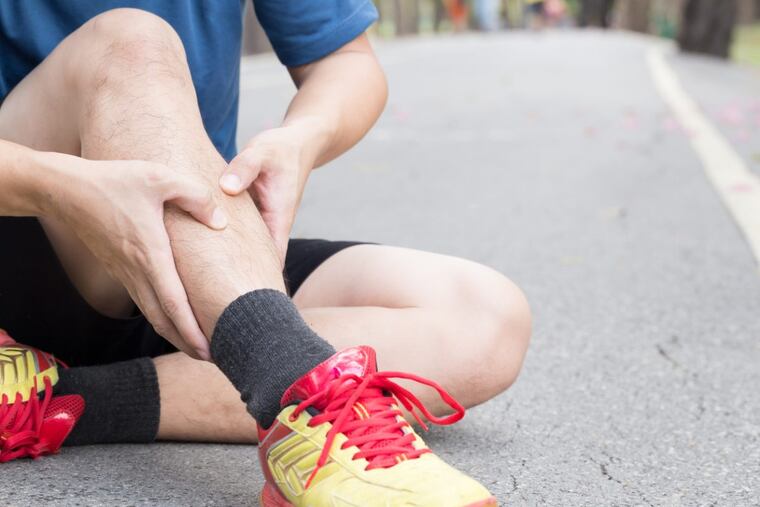3 exercises to ease shin splints - and prevent them
Shin splints is used as an all-encompassing term for any pain on the front of the shin. But it's important to know that shin splints are often warning sign of a larger injury that has gone unaddressed.

The Broad Street Run is the unofficial start to the running season in Philadelphia. And as runners continue to ramp up their mileage heading into fall marathon season, cases of shin splints will be on the rise.
Shin splints is used as an all-encompassing term for any pain on the front of the shin. But it's important to know that shin splints are often warning sign of a larger injury that has gone unaddressed.
Shin splints are a form of muscle imbalance, meaning one muscle is stronger than the other. There are two muscles that make up what we call the calf muscle. Often in the case of shin splints, the muscle in the back is stronger than the muscle in the front. There could also be weakness in areas above the knee or even all the way up to the core that could be causing shin splints.
That's why, when treating shin splints, you need to work more than just the shin. Your running pattern should be evaluated to see if your heel or toes are striking the ground. Imbalances in the hips, knees and back should also be taken into consideration.
The three exercises below focus on addressing all the areas that can cause shin splints.
Stretch the front of your shin.
Take your shoes off, curl your toes under and press the front of your foot into the ground. If you need to get a deeper stretch, bend your knee on the opposite side.
This stretch should never be painful in the shin so don't push it. Hold the stretch for 30 seconds and do six sets. Perform this stretch on both legs, regardless of if you only feel the pain one shin.
Tap your toe.
You can do this stretch standing or sitting. Keeping your heel on the ground, tap your toe for one minute. You might not be able to do this right away especially if your shin splints are especially painful. Do this three times. You may feel a burn in the front of the leg but if becomes painful then you should stop.
Strengthen your glutes.
Your glute muscles help you control your foot strike. For this exercise, stand on your right foot on a flat surface with the left foot hovering above the ground. Now try to slowly drop your left hip as far as you can then lift it up for 30 seconds. You will likely have a very small range of motion but that's ok. Do not bend and straighten your right knee to get a bigger range of motion.
Try not to touch the ground between each repetition. You're going to feel the exercise on your standing leg more than you are on the on the leg going up and down. You want to perform 3 sets on each leg.
Heather Moore, PT, DPT, is the owner of Total Performance Physical Therapy, a physical and aquatic therapy center in North Wales and Hatfield, Pa. She received her master's and doctorate in physical therapy from the University of Maryland-Baltimore.